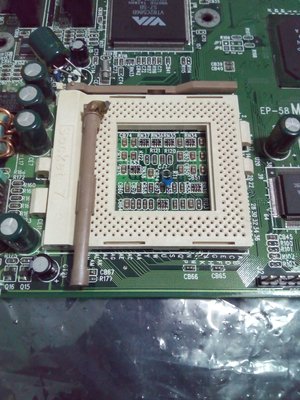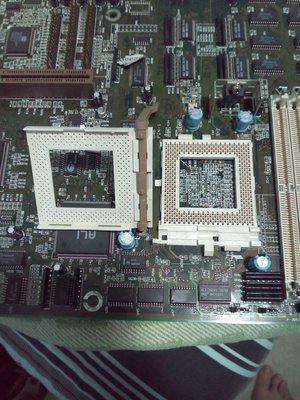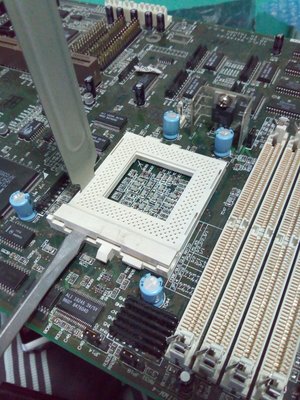First post, by Imperious
I didn't know this could be done until tonight, but about 2 years ago I bought an AT computer with an Epox Super socket 7 motherboard inside, and later
found out that the cpu socket locking latch was broken. I've managed to fix it with a donor motherboard that had a socket 5 on it, the latch is the same.
It's actually quite easy to separate the 2 parts. A 10mm wide flat blade screwdriver fits under the back and lifts it up a bit, not too much pressure, then
insert another similar tool into the left back notch, jiggle it a bit and it should release, then the rest can be easily released and the top removed.
Due to the location of caps, etc, other motherboards may require a modified approach.
Atari 2600, TI994a, Vic20, c64, ZX Spectrum 128, Amstrad CPC464, Atari 65XE, Commodore Plus/4, Amiga 500
PC's from XT 8088, 486, Pentium MMX, K6, Athlon, P3, P4, 775, to current Ryzen 5600x.



